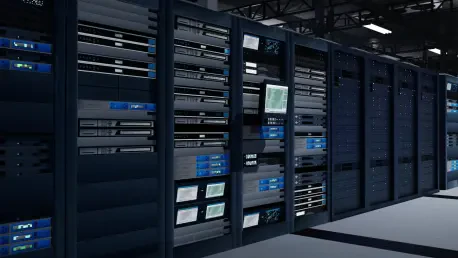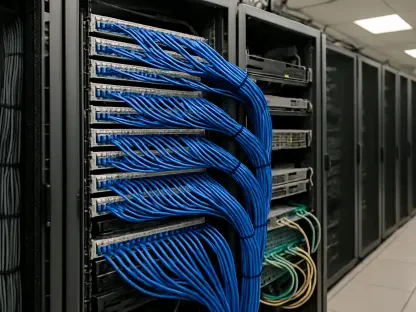The recent proposal for new regulations concerning a data center development in Delaware has sparked significant debate. New Castle County Councilman Dave Carter introduced legislation in response to mounting concerns over the potential environmental and community impact of this large-scale project. With a critical eye on energy efficiency and sustainability, Carter’s legislation aims to address resident concerns surrounding the development of the Starwood Digital Ventures data center near Delaware City. The planned center, while promising economic benefits such as jobs, also raises alarms due to its projected energy consumption and environmental impact. These concerns have prompted a reevaluation of the regulatory framework required to manage such developments responsibly and sustainably.
Balancing Economic Growth and Environmental Concerns
Residents’ Concerns and Proposed Legislation
The plans for a data center, spanning a massive 6 million square feet, are primarily affected by its sizeable energy demands and proximity to residential areas. The center’s predicted energy consumption of 1.2 gigawatts hourly has raised pressing concerns about its environmental footprint amidst calls for sustainable growth. Councilman Carter’s proposed legislation takes inspiration from Virginia’s “Data Center Alley,” incorporating numerous regulatory measures to mitigate these concerns. While aiming to balance economic benefits with environmental responsibility, the plan addresses critical aspects such as mandatory setbacks from residential zones, noise and light pollution limits, and the prohibition of open-loop cooling systems unless using reclaimed water.
Carter’s legislative proposal seeks to harmonize data center operations with community expectations by creating adequate physical and visual buffers through designated setbacks and noise barriers. Provisions mandate significant separation between data centers and residential or sensitive areas like schools or daycare centers. Specific regulations include noise limits set at a maximum of 55 decibels, alongside requirements preventing light pollution on neighboring properties. These regulations collectively underscore a commitment to minimizing the project’s intrusiveness on the community, thereby fostering a sustainable coexistence between industry and neighborhood dynamics.
Redefining Industrial Classifications
A shift in how data centers are classified reflects a broader reevaluation necessitated by modern technological advancements. Carter proposes designating data centers as “heavy industry” instead of “light industry,” highlighting the significant scale and impact they may have on their surroundings. This perspective encourages a rethinking of industrial categorizations, aligning them with the contemporary realities of data center operations. Recognizing the complex requirements and potential impacts of such infrastructures ensures that regulatory measures are suitable and pertinent, addressing both immediate and long-term concerns.
Despite these proposed regulatory frameworks, the immediate applicability to the Delaware City data center remains uncertain. As the project progresses “by right,” the first phase may evade these new regulations. This status allows the project to advance if it meets existing criteria, posing challenges for imposing stricter guidelines. Nonetheless, the second phase stands to be more susceptible to Carter’s regulations, subject to the developers’ voluntary alignment with these enhanced rules. Through this legislative endeavor, the intention is to reconcile technological development with environmental integrity, ensuring that economic growth does not come at the expense of community and ecological well-being.
The Broader Socio-Environmental Impact
Community and Legislative Responses
The development project has ignited public discourse, underscored by a town hall meeting led by Delaware House Speaker Melissa Minor-Brown. At this meeting, community members expressed apprehensions over the data center’s impact on local ecosystems and resource consumption. These discussions highlight ongoing concerns about maintaining air quality and safeguarding water resources amidst the demands for technological infrastructure. With the public’s increasing awareness of environmental implications, the push for stricter regulatory oversight emphasizes the need for socially responsible development that aligns with broader ecological goals.
A pivotal aspect of this process involves the New Castle County Planning Commission’s in-depth review of the data center’s development plans. Carter anticipates that advocacy efforts during this review will drive the classification of the data center under stricter “heavy industry” standards, promoting closer alignment with his proposed regulations. This anticipation reflects a concerted move towards enhanced regulatory scrutiny and public involvement in determining the project’s fate, emphasizing an interactive approach between lawmakers, developers, and the community to achieve a balanced resolution.
Future Considerations and Industry Implications
As Starwood Digital Ventures prepares for the next steps, the ambiguity surrounding the development plans’ formal submission remains. The absence of commentary from the company’s representatives points to the potential complexities inherent in navigating these proposed regulations. This uncertainty underscores the imperative for clear communication and collaboration between industrial entities, legislators, and affected communities. The dialogue surrounding Delaware’s data center encapsulates broader challenges facing industrial development, where technological advancement must be met with conscientious stewardship of natural and community resources.
Looking ahead, the legislative proposals underscore a profound transition towards more sustainable practices within the data center industry. By engaging in proactive legislative discussions and implementing stricter standards, communities can navigate the delicate balance between reaping economic benefits and preserving environmental integrity. The dialogue sparked by Delaware’s data center project potentially sets a precedent for similar industrial endeavors nationwide, shaping how future projects are approached and regulated.
Conclusion: Paving the Path Forward
The plans for a colossal data center covering 6 million square feet raise significant issues due to its enormous energy needs and proximity to residential zones. Consuming 1.2 gigawatts per hour, the center’s energy footprint has sparked environmental concerns amid calls for sustainable development. Councilman Carter has proposed legislation inspired by Virginia’s “Data Center Alley,” which introduces various regulations aimed at addressing these issues. The goal is to achieve equilibrium between economic gain and environmental accountability. Critical components of the plan include mandatory setbacks from residential areas, limits on noise and light pollution, and the prohibition of open-loop cooling systems unless utilizing reclaimed water. The proposal seeks to align data center operations with community expectations by implementing physical and visual buffers. It mandates substantial separation from residential or sensitive regions and imposes noise limits of 55 decibels to prevent light pollution. This approach highlights a dedication to reducing the project’s impact, ensuring a sustainable balance between industry and community life.









